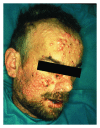New Insights into HIV/AIDS-Associated Cryptococcosis
- PMID: 24052889
- PMCID: PMC3767198
- DOI: 10.1155/2013/471363
New Insights into HIV/AIDS-Associated Cryptococcosis
Abstract
Cryptococcal meningitis is a life-threatening opportunistic fungal infection in both HIV-infected and HIV-uninfected patients. According to the most recent taxonomy, the responsible fungus is classified into a complex that contains two species (Cryptococcus neoformans and C. gattii), with eight major molecular types. HIV infection is recognized worldwide as the main underlying disease responsible for the development of cryptococcal meningitis (accounting for 80-90% of cases). In several areas of sub-Saharan Africa with the highest HIV prevalence despite the recent expansion of antiretroviral (ARV) therapy programme, cryptococcal meningitis is the leading cause of community-acquired meningitis with a high mortality burden. Although cryptococcal meningitis should be considered a neglected disease, a large body of knowledge has been developed by several studies performed in recent years. This paper will focus especially on new clinical aspects such as immune reconstitution inflammatory syndrome, advances on management, and strategies for the prevention of clinical disease.
Figures




References
-
- Park BJ, Wannemuehler KA, Marston BJ, Govender N, Pappas PG, Chiller TM. Estimation of the current global burden of cryptococcal meningitis among persons living with HIV/AIDS. AIDS. 2009;23(4):525–530. - PubMed
-
- Sanfelice F. Contributo alla morfologia e biologia dei blastomiceti che si sviluppano nei succhi di alcuni frutti. Annali di Igiene. 1894;5:232–262.
-
- Busse O. Uber parasitare zelleinschlusse und threzuchtung. Zbl Bakt I Abt. 1894;16:175–180.
-
- Buschke A. Ueber eine durch coccidien hervegerufene krankheit des menschen. Deutsche Medizinische Wochenschrift. 1895;21(1):14–15.
Publication types
LinkOut - more resources
Full Text Sources
Other Literature Sources

